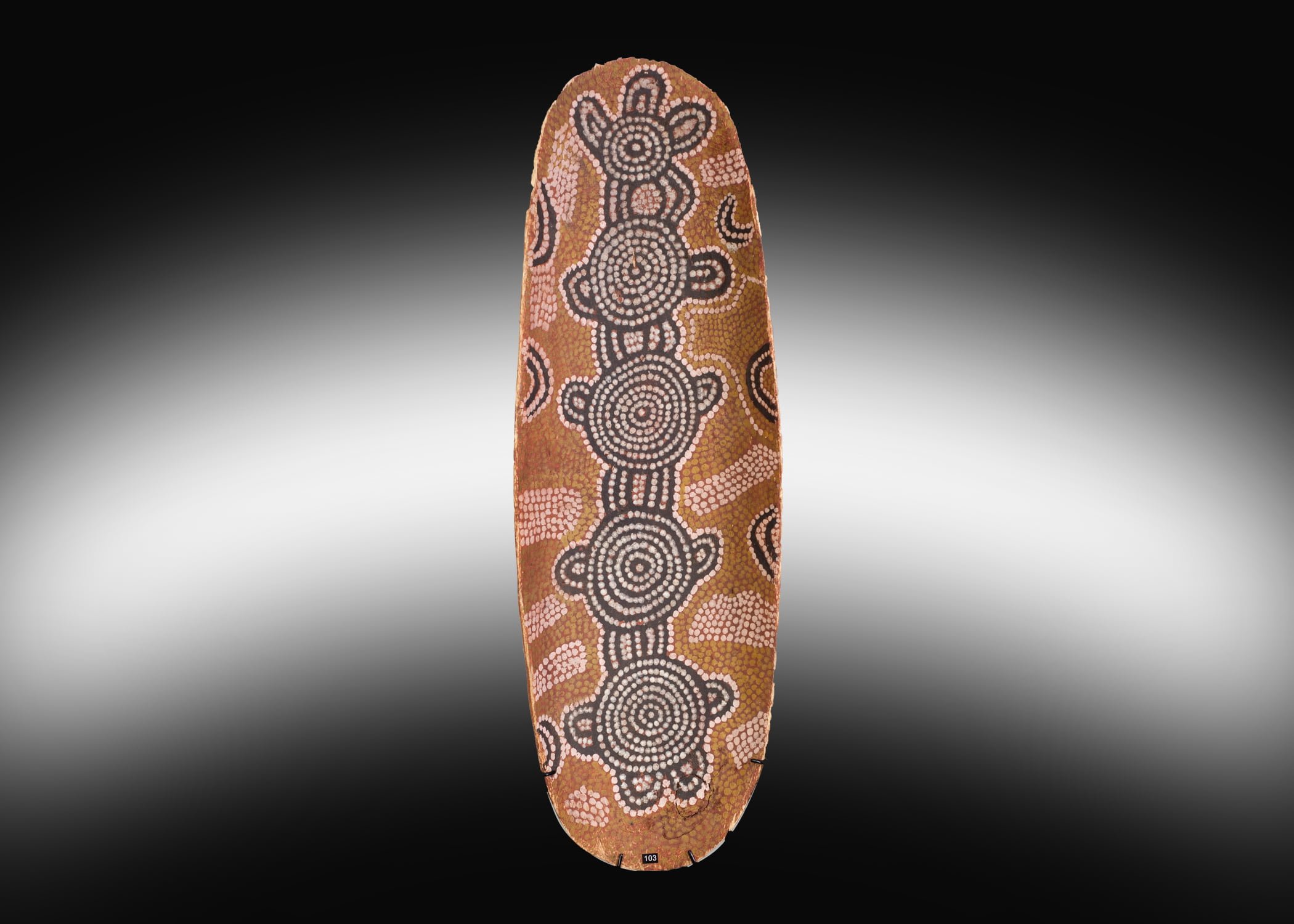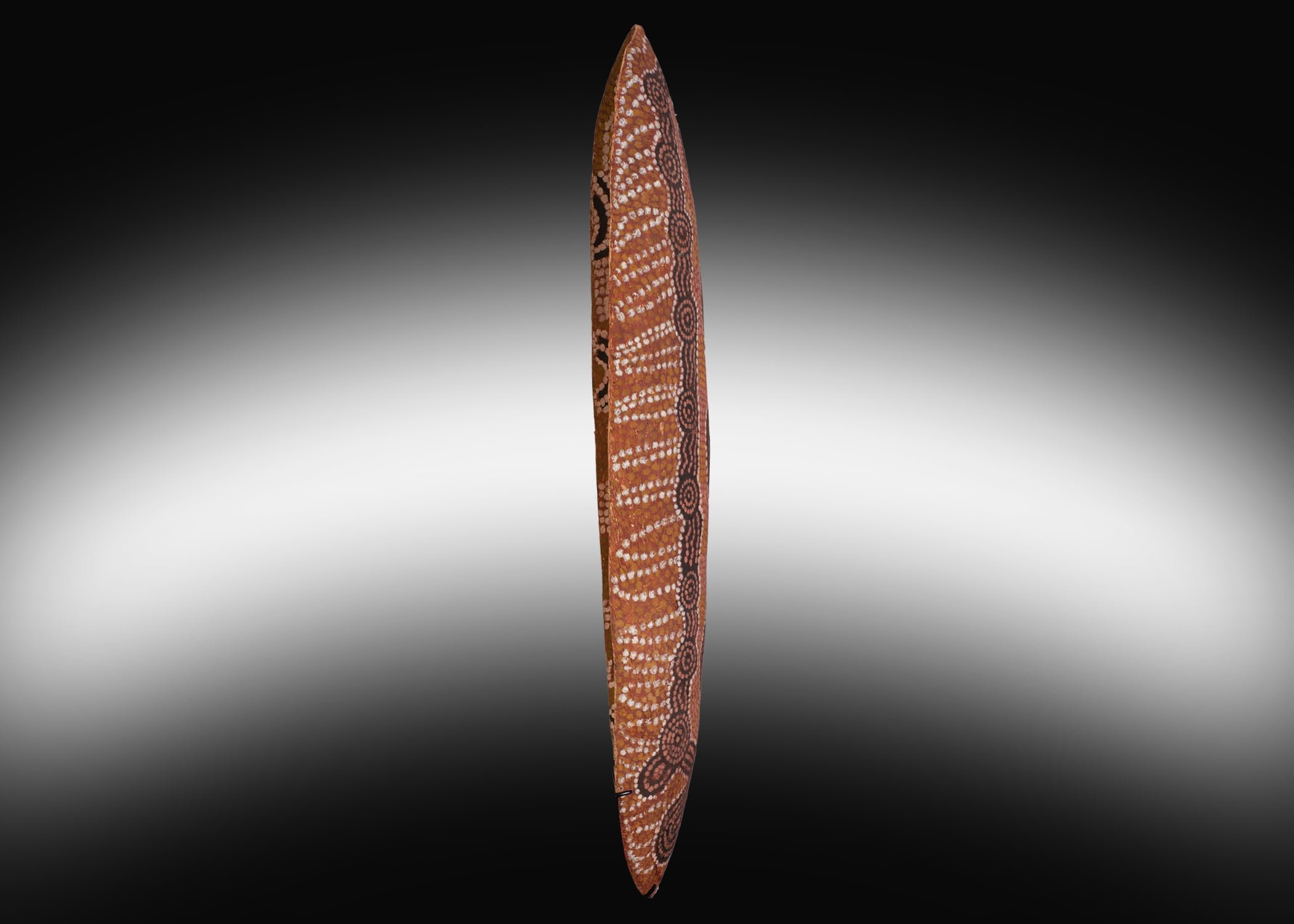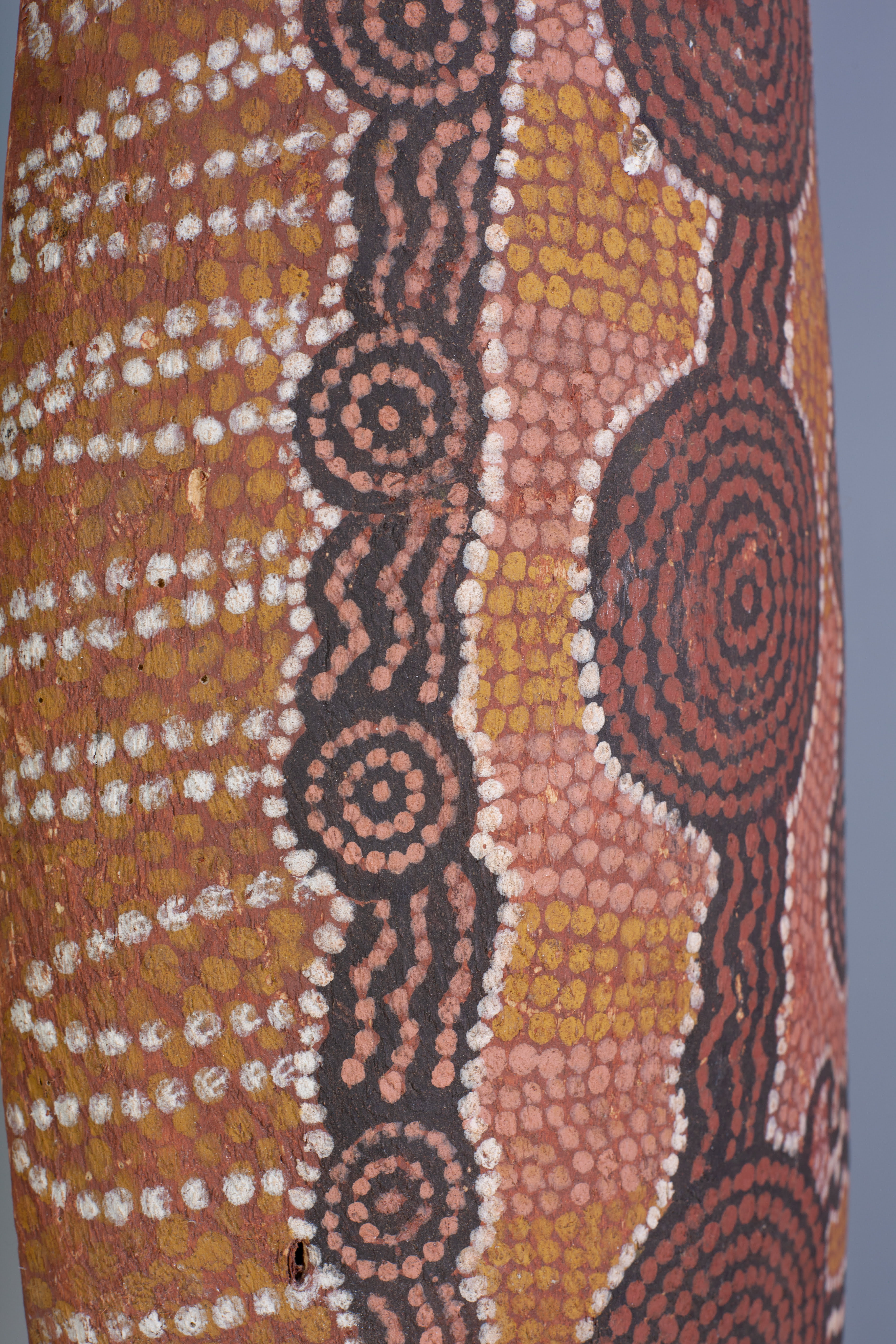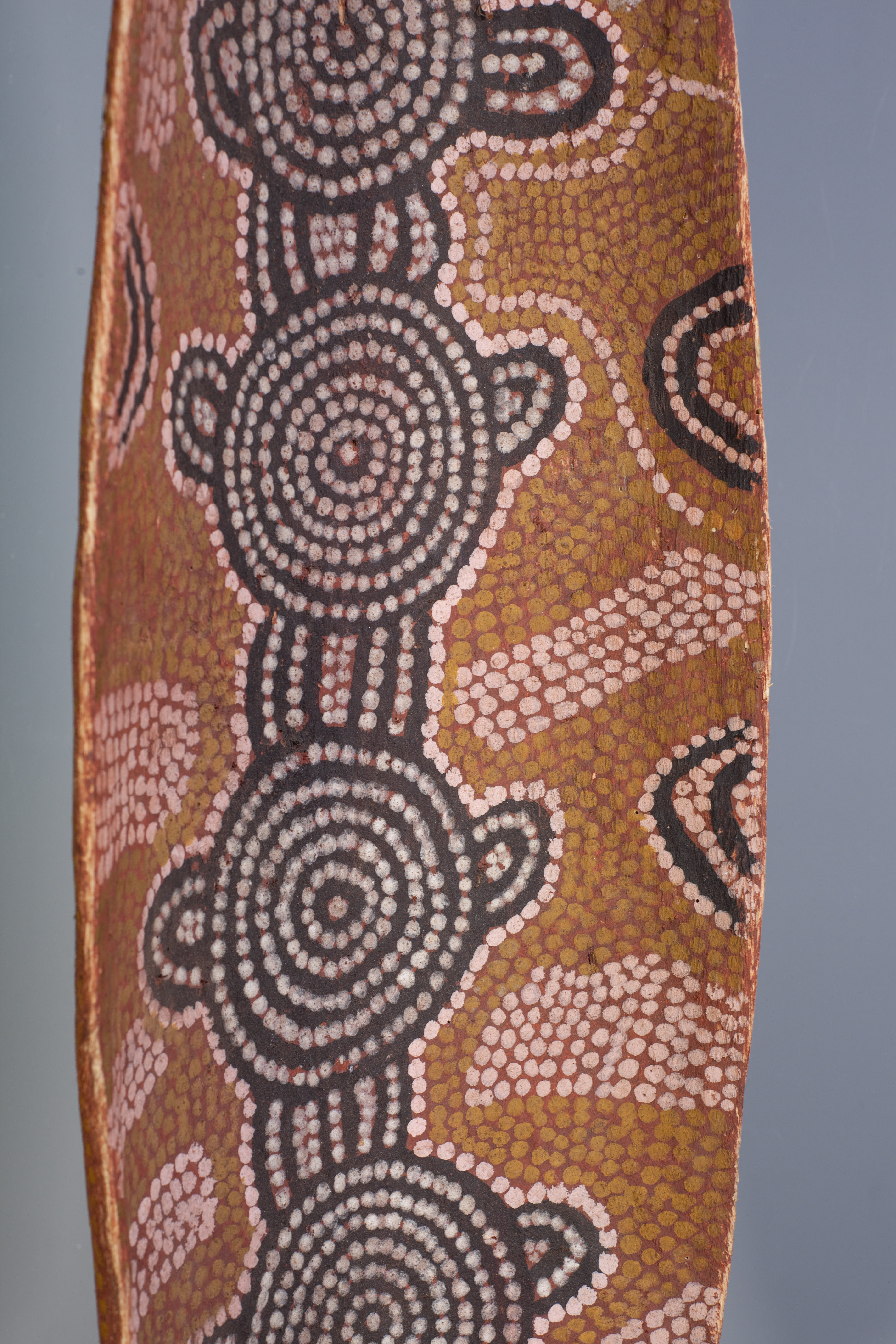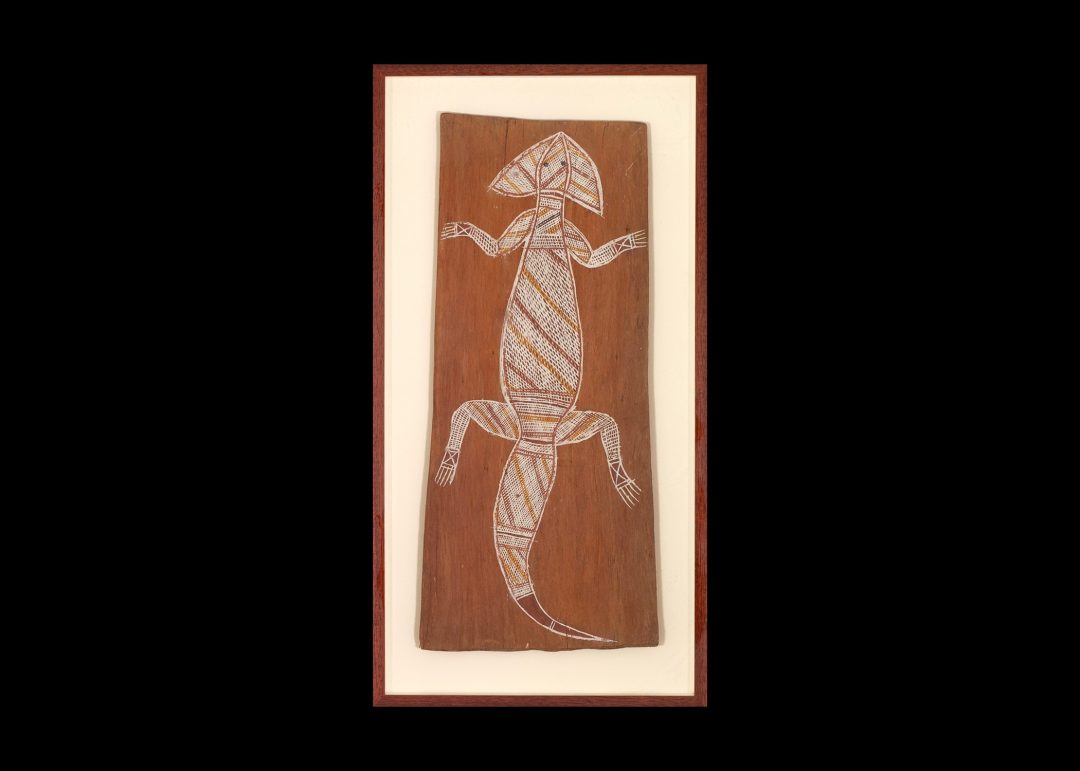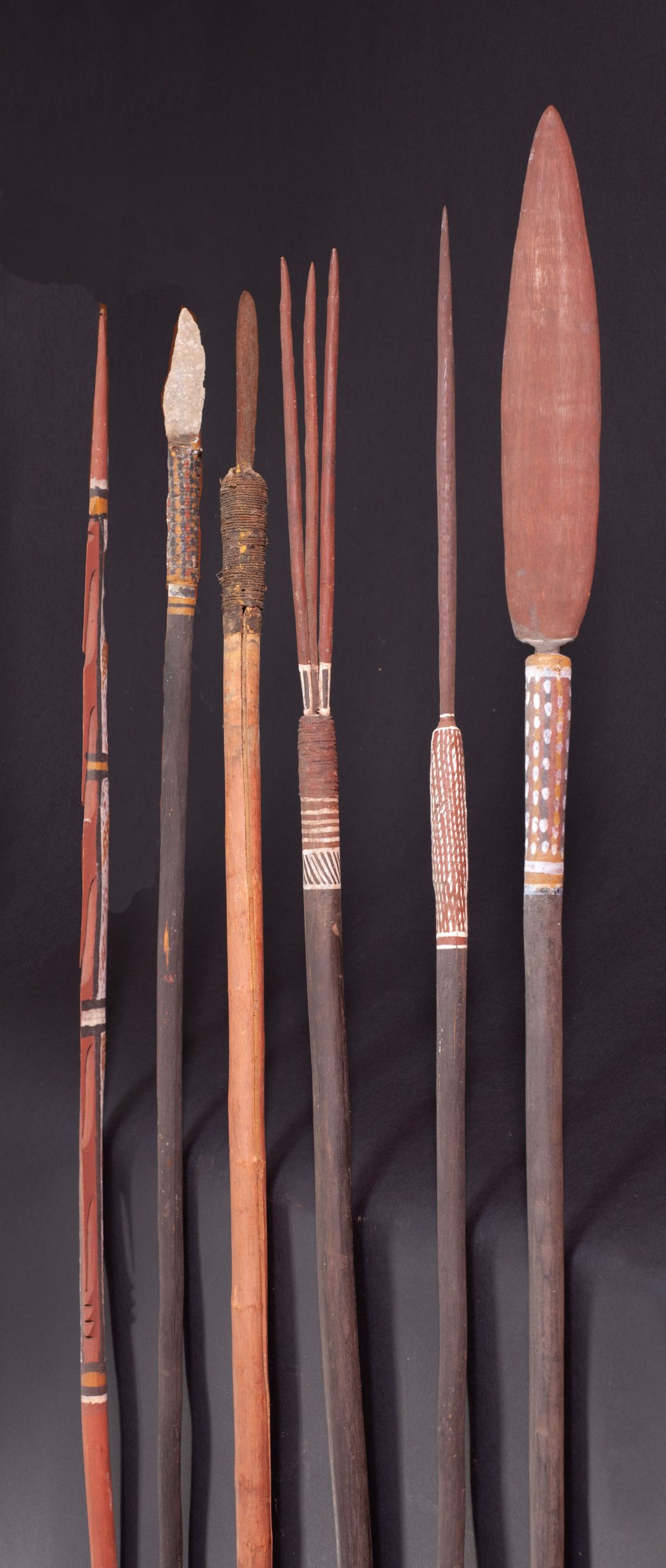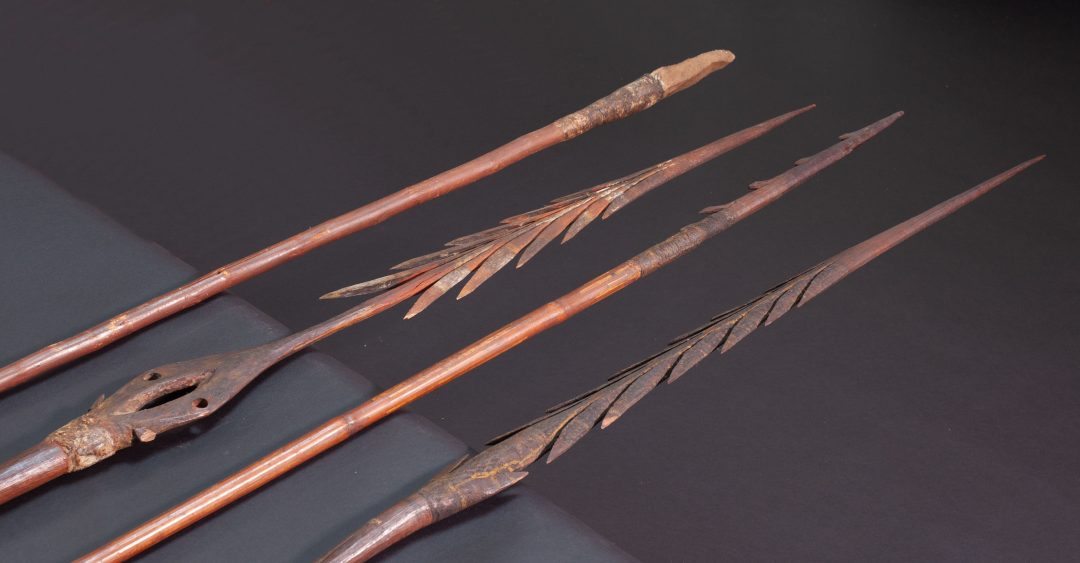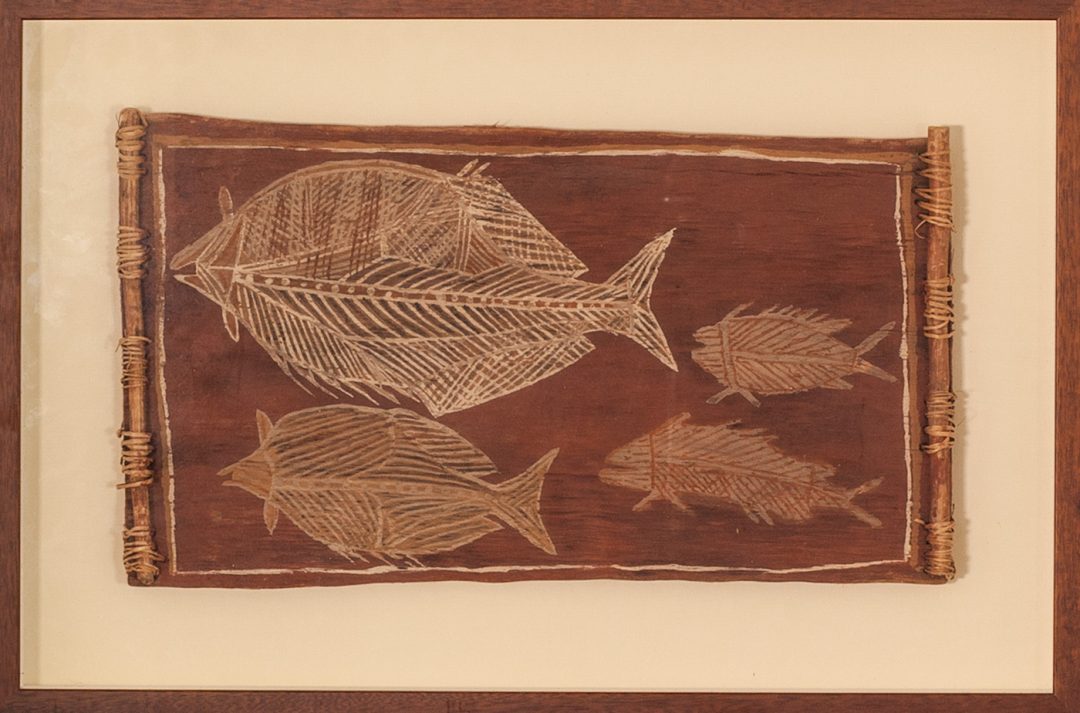Papunya Painted Coolamon
-
TitlePapunya Painted Coolamon
-
LocationPapunya , Northern Territory
-
DateMid 1970s to 1980
- Size72cm (L) x 24cm (W)
-
PricePrice on application
Painted coolamon from Papunya mid 1970s-1980
This beautiful hand crafted painted coolamon was created most likely in the mid to late 70s. Although the artist is unknown, clearly it is by one of the very component artists from the original Papunya movement. The first painting being produced only in 1971. Often these works were produced on canvas, and occasionally other mediums were used such as this coolamon, the concave double sided surface infinitely more difficult to paint.
For those that don’t know the coolamon is an anglicised NSW Aboriginal word used to describe an Australian Aboriginal carrying vessel. It is a multi-purpose shallow vessel, or dish with curved sides, ranging in length from 30–70 cm, Coolamons were traditionally used by Aboriginal women to carry water, fruit, nuts, as well as to cradle babies. Today when women gather bush tucker, they usually use a billy can, bucket or flour tin. Coolamons were carried on the head when travelling any distance, or under the arm if used as a cradle. If carried on the head, a ring pad (akartne in Arrernte) was placed on the head, made out of possum and/or human hair string, twisted grass, or feathers. Coolamons were used for winnowing grains in the traditional bread-making process, as well as a general heating and cooking vessel. They could even be used as an umbrella.
The painted designs often referring to the creation of their homelands.
This beautiful coolamon is decorated on both sides and displayed on a custom metal stand.
Painted coolamon from Papunya mid 1970s-1980
This beautiful hand crafted painted coolamon was created most likely in the mid to late 70s. Although the artist is unknown, clearly it is by one of the very component artists from the original Papunya movement. The first painting being produced only in 1971. Often these works were produced on canvas, and occasionally other mediums were used such as this coolamon, the concave double sided surface infinitely more difficult to paint.
For those that don’t know the coolamon is an anglicised NSW Aboriginal word used to describe an Australian Aboriginal carrying vessel. It is a multi-purpose shallow vessel, or dish with curved sides, ranging in length from 30–70 cm, Coolamons were traditionally used by Aboriginal women to carry water, fruit, nuts, as well as to cradle babies. Today when women gather bush tucker, they usually use a billy can, bucket or flour tin. Coolamons were carried on the head when travelling any distance, or under the arm if used as a cradle. If carried on the head, a ring pad (akartne in Arrernte) was placed on the head, made out of possum and/or human hair string, twisted grass, or feathers. Coolamons were used for winnowing grains in the traditional bread-making process, as well as a general heating and cooking vessel. They could even be used as an umbrella.
The painted designs often referring to the creation of their homelands.
This beautiful coolamon is decorated on both sides and displayed on a custom metal stand.

